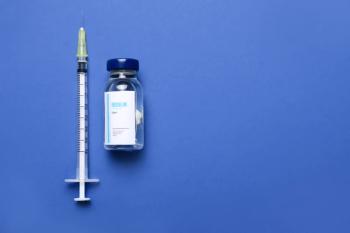
- Vol. 164 No. 5
- Volume 164
- Issue 5
Ohio Cracks Down on PBMs
A new rule in Ohio is designed to bring transparency to drug prices in the pharmacy.
The Ohio Department of Insurance has told PBMs and health insurers that they have to disclose the lowest price for a prescription drug to patients and prohibits them from charging more for prescription drugs that cost less than the copay. The department has also banned the gagging of pharmacists by contractually preventing them from telling patients they could pay less out of pocket for a drug than the insurance copay.
There had been many examples of egregious clawbacks in Ohio, says Antonio Ciaccia, using the term to describe the overcharging of the patient and the later collection of some of that overcharge by the PBM. Ciaccia is director of government and public affairs for the
In testimony to a committee of the Ohio House of Representatives, Chiaccia gave an example:
“For a medication used to treat severe vitamin deficiency, the pharmacy’s cash price was $92. The pharmacy processed the claim and was told to charge the patient $115.19. The PBM later performed a $55.47 clawback. So in the end, the patient was overcharged $23.19, the pharmacy lost $32.28, and the PBM pocketed it all. And again, while this was occurring, the pharmacist was prohibited in their contract from blowing the whistle on the charade, and helping the patient find a cheaper alternative method of payment.”
Preventing pharmacists from informing their patients about drug prices is a serious matter, Ciaccia told the committee. “Pharmacists should not be silent pawns in drug pricing shell games, and should be free to discuss all options for the patient at the pharmacy counter-including whether or not there are ways to save money on their needed medications.”
Related article:
The results of the ruling from the insurance department is an immediate lowering of drug copays, Ciaccia tells Drug Topics. “Ultimately, the Ohio Department of Insurance acted once they learned how pervasive the problem of clawbacks was,” he says. The Ohio legislature had been making an effort to prohibit the practice of charging a higher copay than the actual price of a drug, which gave the insurance department the impetus to act, he adds.
Other states have enacted similar rules or are considering legislation to increase drug price transparency. “There seems to be a universal gag reflex by lawmakers who learn about co-pay clawbacks and mandated silence of pharmacists,” says Ciaccia. “The practices are so distasteful that even the PBMs’ own association won’t stand up for them.”
Two large PBMs-Express Scripts and CVS Caremark-told Reuters that their contracts include clauses that ensure that members receive the lowest drug price automatically.
On the federal level, two bills have been introduced that are aimed at making drug pricing transparent to consumers and preventing gag clauses.
The legality of such gag clauses has always been questionable, Ciaccia adds, since they are the subject of several lawsuits across the country. “Theoretically, plans and PBMs could still penalize pharmacists for pushing back and blowing the whistle on non-compliance with the new rules, but ultimately, if PBMs ignore these new policies, they stand to be fined or having their licenses suspended by the Ohio Department of Insurance. Personally, I think the ODI edict ... will end these shenanigans for good.”
Articles in this issue
over 7 years ago
Top Ways Pharmacists’ Roles Are Changingover 7 years ago
Small Doses News for Pharmacists May 2018over 7 years ago
Five Ways the New Merck Differs from the 1899 Editionover 7 years ago
Ramadan, Medications, and the Pharmacistover 7 years ago
Are There Too Many Pharmacists?over 7 years ago
It's Time for Pharmacists to Carve Out a New Roleover 7 years ago
It's Time to Rethink Pharmacy Tech Staffingover 7 years ago
Four Ways to Help Pharmacy Technicians Improve Job Performanceover 7 years ago
Ibalizumab-uiyk (Trogarzo) for Multi-Drug-Resistant HIV-1over 7 years ago
Why I Became a Board-Certified Geriatric PharmacistNewsletter
Pharmacy practice is always changing. Stay ahead of the curve with the Drug Topics newsletter and get the latest drug information, industry trends, and patient care tips.

















































































































